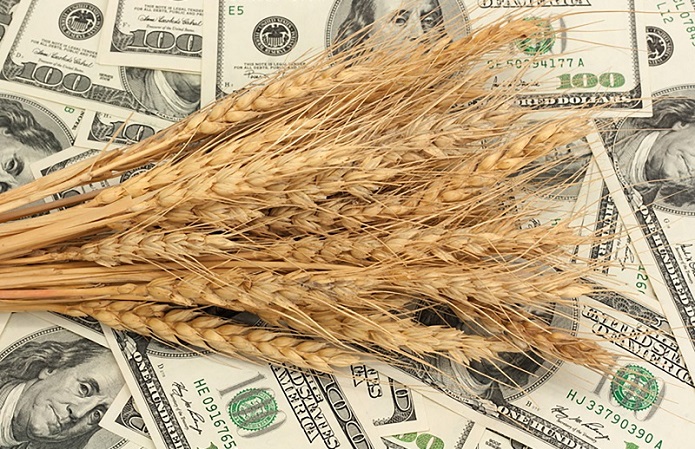Australia-Vietnam trade set to continue despite tariff change

South-East Asian powerhouse Vietnam announced last week it had revised its most-favoured-nation (MFN) tariff rates for corn and wheat imported from origins not already subject to free trade agreements. The tax on corn will fall from 5 per cent to 2pc, and the wheat tax will drop from 3pc to zero.
The decree, which reportedly will take effect on December 30, primarily was made to support the domestic stockfeed industry, which was hit particularly hard in mid-2021 when the country’s most serious COVID-19 outbreak escalated government control measures.
According to the WTO trade rules, countries cannot normally discriminate between their trading partners. If one country was to grant a trading partner a special favour such as a lower customs duty for one of its products, the same must be awarded to all other WTO members. This principle is known as the MFN treatment.
However, some exceptions are permitted. For example, countries can set up a free trade agreement that applies only to goods traded within the group, discriminating against goods imported from outside.
The ASEAN-Australia-New Zealand Free Trade Area (AANZFTA) is a trade agreement between Australia, New Zealand and the 10 nations comprising the Association of Southeast Asian Nations (ASEAN): Brunei Darussalam; Cambodia; Indonesia; Laos; Malaysia; Myanmar; The Philippines; Singapore; Thailand, and Vietnam. Under this agreement, Vietnam does not impose import taxes on Australian wheat or barley.
The change to the import tax regime will put the United States on a level playing field with its competitors from ASEAN and the Black Sea region. Nonetheless, rising prices and high sea-freight rates have rendered US origin wheat uncompetitive into Vietnam for all but some inelastic milling wheat demand. Vietnamese millers prefer soft white wheat (SWW) from the US for its high dissolvability, and dark northern spring (DNS) wheat for its gluten strength.
Vietnam has experienced rapid expansion and development over the past two decades. Growth in animal-based protein consumption has gone hand-in-hand with this economic development. Vietnam has turned to imports of corn, wheat and barley as stockfeed ingredients to support a 30pc increase in meat production since 2010. Pork has traditionally been the meat of choice for the Vietnamese people, but consumption of chicken meat, beef and seafood has increased considerably in recent years.
Vietnam imported more than 500,000t of US wheat in the 2020-21 marketing year, second in volume to its imports from Australia at 2.37 million tonnes (Mt). Vietnam has imported an average 4.24Mt wheat over the past five years, and the USDA has them in for 3.65Mt in the current marketing year.
Australia is well positioned to capture the majority of that business again in 2021-22.
Feed wheat imports increased by 518,000t in the first eight months of calendar year 2021, 96pc higher than the same period last year. This increase was due to the price competitiveness of feed wheat over corn. Demand for wheat-based products in the Vietnamese hotel/restaurant/catering sectors remained low due to COVID-19 restrictions on international tourism and travel.
Vietnam is by far the largest importer of corn in South-east Asia, domestic production having peaked midway through the last decade, and demand is continuing to soar. It was fifth on the list of global importers in 2020-21 at 13.5Mt, and the USDA has Vietnam matching strides with South Korea in fifth spot in 2021-22 at 11.5Mt. This will be the first year-on-year decline in corn imports since 2011-12, and is primarily due to lower exportable supplies out of Brazil.
Corn imports decreased by 402,000t in the eight months to August 2021, 5.8pc lower than the previous corresponding period. Corn and feed wheat are exchangeable sources of energy in many stockfeed formulations. As corn prices rose relative to wheat over the past 15 months, wheat, and to a lesser degree barley, replaced corn in the rations.
In response to domestic demand signals, Vietnamese corn production began increasing in the 1980s and continued this upward trend until 2015. However, it reached an inflection point in the 2015-16 marketing year when imports exceeded production for the first time in almost 50 years. Production stalled and has declined slowly ever since, as domestic producers found it increasingly difficult to compete with imported corn on both a cost and quality basis.
Barley has also found favour in stockfeed rations in Vietnam, particularly following the introduction of the exorbitant import tariff by China which forced Australian exporters to actively nurture alternate markets. In the 2018-19 marketing year, Vietnam imported just 133,000t of barley, almost exclusively malting barley for the brewing industry. That increased to almost 200,000t in 2019-20 and then skyrocketed to 750,000t in 2020-21. USDA has Vietnam pencilled in for 800,000t in the current trade year.
According to Australian Bureau of Statistics export data, barley shipments to Vietnam from October 2020 to September 2021 totalled 640,000t. Malting barley accounted for 124,000t, in line with historical purchases, but only 19.3pc of the total. Feed barley shipments came to 516,000t, or 81.7pc of the total, up substantially on historical numbers. With another big barley crop being harvested now, Australia is ideally placed to capture the majority of Vietnam’s increasing barley demand this season.
The tax changes announced last week will make competing origins more competitive into Vietnam from December 30. However, they are unlikely to have a material impact on Vietnamese demand for Australian wheat and barley in 2021-22 as high prices and a hot sea-freight market keep most competitors well out of the money.
Read also
Wheat in Southern Brazil Impacted by Dry Weather and Frosts
Oilseed Industry. Leaders and Strategies in the Times of a Great Change
Black Sea & Danube Region: Oilseed and Vegoil Markets Within Ongoing Transfor...
Serbia. The drought will cause extremely high losses for farmers this year
2023/24 Safrinha Corn in Brazil 91% Harvested
Write to us
Our manager will contact you soon



